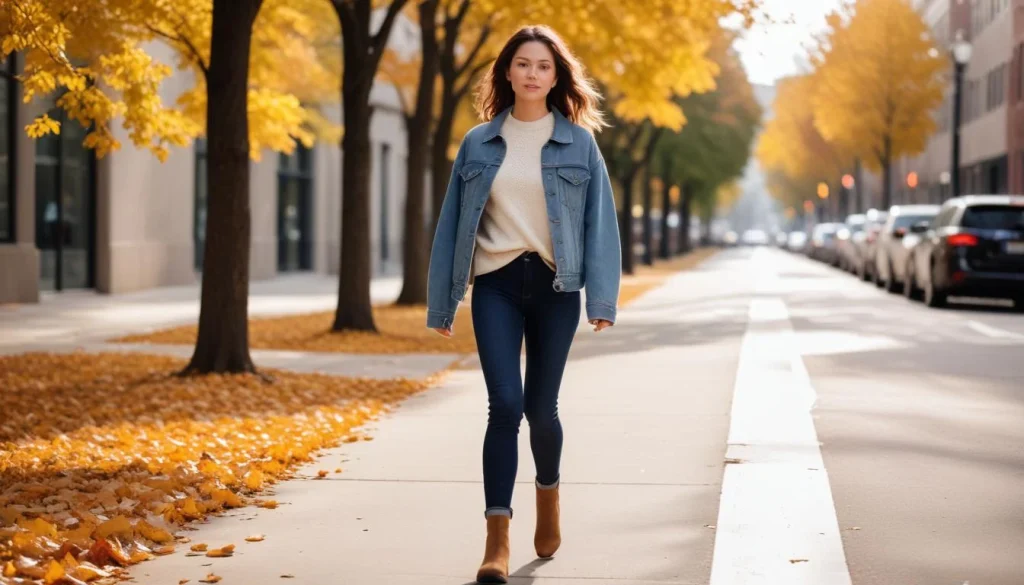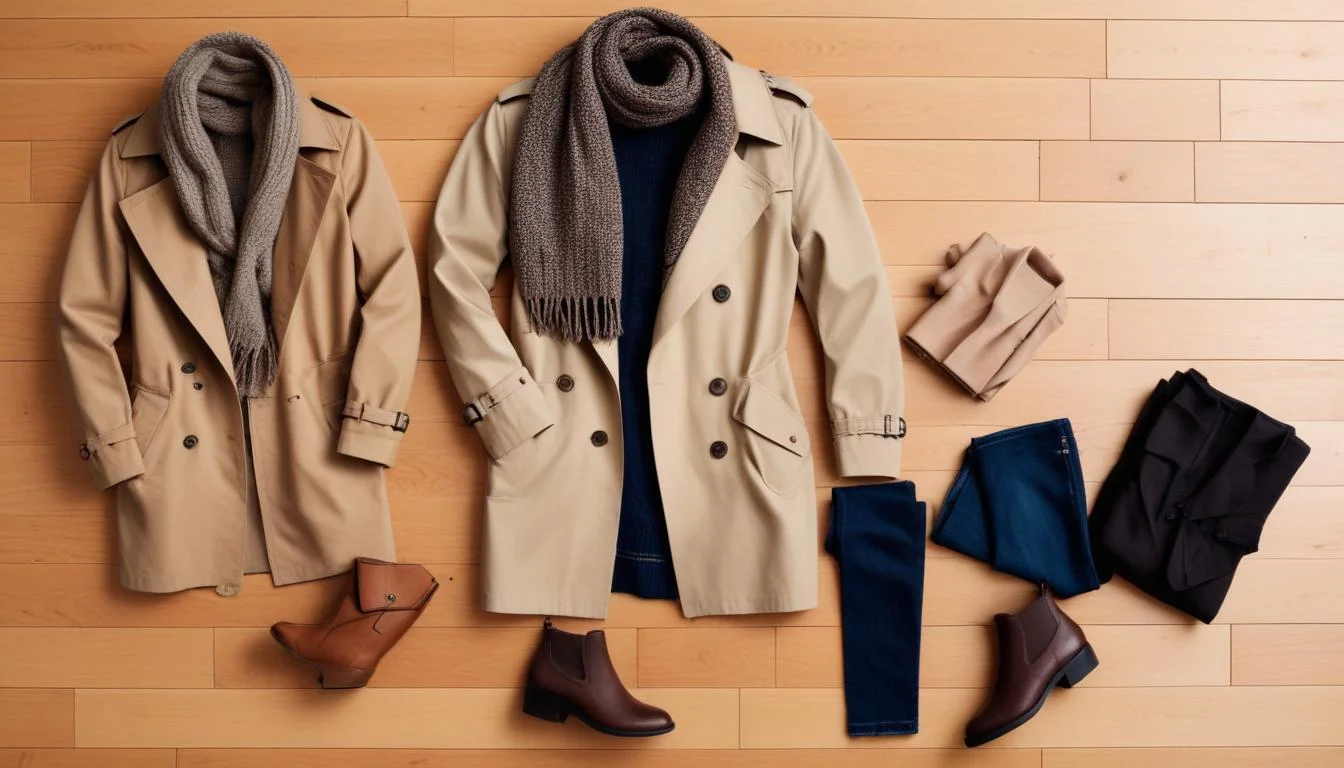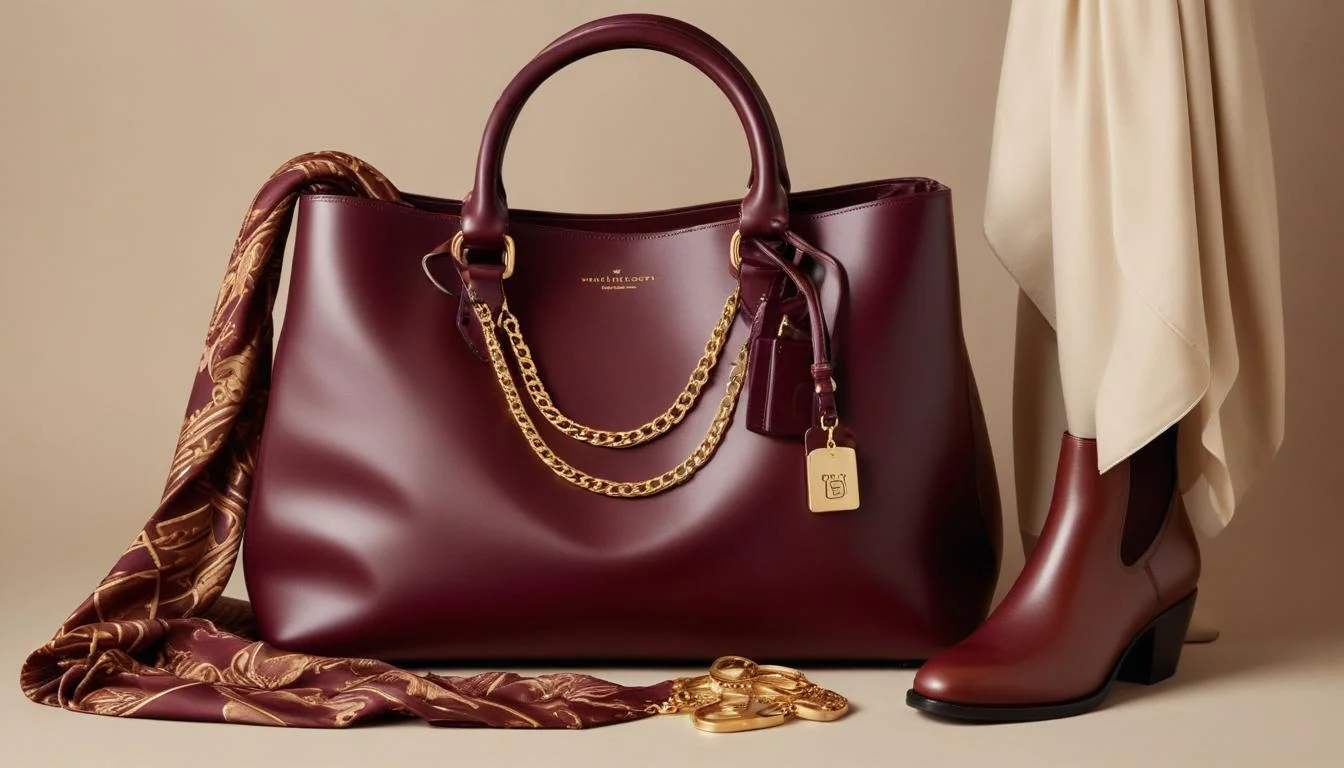Effortless Closet Transition: Summer to Fall Styles 2025

Transitioning your closet from summer to fall involves strategically integrating warmer textures and deeper hues into your existing wardrobe, allowing for versatile outfits that adapt to fluctuating temperatures and new seasonal trends.
As the vibrant days of summer gently recede, the crisp air of autumn beckons, bringing with it a delightful shift in fashion. September 2025 marks the perfect time to begin the exciting process of how to transition your closet: 4 easy steps to move from summer to fall styles in September 2025. This isn’t about discarding your beloved summer pieces, but rather reimagining them with a touch of autumnal elegance and practicality. We’ll explore how to seamlessly blend your current wardrobe with new elements, ensuring you’re stylishly prepared for the cooler months ahead while maximizing the longevity of your favorite garments.
Understanding the seasonal shift: why transition matters
The shift from summer to fall is more than just a change in temperature; it’s a fundamental alteration in our daily routines, light, and even our moods. Fashion, being a reflection of our environment and inner selves, naturally evolves with these changes. A thoughtful wardrobe transition isn’t merely about swapping out shorts for sweaters; it’s about embracing a new aesthetic that aligns with the season’s unique character – from the earthy tones of falling leaves to the cozy textures that invite warmth and comfort. Ignoring this transition can leave us feeling ill-prepared for fluctuating weather and out of sync with the prevailing style trends.
Moreover, a well-executed seasonal transition extends the life of our clothing. By strategically layering and repurposing items, we reduce the need for constant new purchases, promoting a more sustainable and mindful approach to fashion. It’s an opportunity to rediscover forgotten pieces, experiment with new combinations, and curate a wardrobe that feels fresh and exciting without breaking the bank. This conscious approach ensures that every garment earns its place, contributing to a cohesive and versatile collection that serves us well throughout the autumn months.
The art of strategic layering
Layering is the cornerstone of fall fashion, offering both practical warmth and stylistic depth. It allows for adaptability, enabling you to add or remove garments as the day’s temperature changes. Starting with a lightweight base, such as a thin long-sleeve tee or a camisole, provides comfort against the skin. Over this, a mid-layer like a cardigan, a light sweater, or a denim shirt can introduce texture and color. The final outer layer, perhaps a trench coat, a blazer, or a leather jacket, completes the ensemble and offers protection from the elements.
- Base layers: Opt for breathable fabrics like cotton or silk.
- Mid-layers: Experiment with knitwear, flannels, or lightweight jackets.
- Outerwear: Invest in versatile coats that can be dressed up or down.
- Texture play: Combine different textures like wool, denim, and silk for visual interest.
Understanding the principles of layering means more than just piling on clothes; it’s about creating a harmonious look where each piece complements the next. It’s an exercise in balancing proportions, colors, and textures to achieve an effortlessly chic appearance that is both functional and fashionable. This thoughtful approach to dressing ensures you’re ready for whatever the autumn day brings, from crisp mornings to surprisingly warm afternoons.
Step 1: declutter and assess your current wardrobe
Before you can effectively transition your closet, a crucial first step is to declutter and assess what you already own. This process not only makes space for new fall pieces but also helps you identify gaps in your wardrobe and rediscover forgotten treasures. Begin by pulling everything out of your closet and drawers, creating a blank canvas. This might seem daunting, but seeing all your clothes at once provides a comprehensive overview of your current style and inventory. It’s an essential part of preparing for the summer to fall transition.
As you go through each item, ask yourself a series of questions: Does it fit well? Have I worn it in the last year? Does it make me feel good? Is it suitable for the upcoming fall season, perhaps with some clever layering? Be honest with your answers. Items that are stained, torn, or no longer fit should be removed. Those that don’t align with your personal style or lifestyle goals for the fall should also be set aside. This rigorous assessment ensures that only pieces you genuinely love and will wear make it back into your organized space.
Categorize and organize
Once you’ve decided what stays, categorize your clothes into summer-only, fall-only, and transitional pieces. Summer-only items, like swimsuits and linen shorts, can be stored away. Fall-only items, such as heavy wool coats, might not be needed immediately but should be kept accessible. The transitional pieces—light jackets, long-sleeve tops, denim, and versatile dresses—are your immediate focus. Organizing by type (tops, bottoms, dresses) and then by color can further streamline your getting-ready process every morning.
- Keep: Items that fit, flatter, and you love to wear.
- Donate/Sell: Clothes in good condition that you no longer need or want.
- Discard: Items that are beyond repair or too worn out.
- Store: Seasonal items that won’t be used for several months.
This systematic approach to decluttering and organizing not only simplifies your daily dressing routine but also provides a clear picture of your wardrobe’s strengths and weaknesses. It lays the groundwork for a more intentional and stylish summer to fall transition, enabling you to build a functional and fashionable wardrobe with purpose. By understanding what you have, you can make smarter decisions about what you might need to acquire.
Step 2: integrate key fall pieces strategically
With your wardrobe decluttered and assessed, the next crucial step in your summer to fall transition is to strategically integrate key fall pieces. This doesn’t mean a complete overhaul, but rather introducing versatile items that can elevate your existing summer clothing. Think about pieces that add warmth, texture, and a touch of autumn’s rich color palette. These additions should complement your style and provide flexibility for varying temperatures, making your wardrobe more adaptable.
Focus on items that offer maximum versatility. A well-chosen blazer, for instance, can instantly transform a summer dress into a fall-appropriate ensemble. Ankle boots are another excellent investment, pairing just as well with skirts and dresses as they do with jeans. The goal is to select pieces that can be mixed and matched with multiple items you already own, thereby maximizing their utility and creating numerous new outfit combinations. This thoughtful approach ensures that every new purchase serves a purpose and enhances your overall wardrobe.
Essential fall staples
Certain items are indispensable for a successful fall wardrobe. These staples provide the foundation upon which you can build countless autumn looks. Consider investing in a few quality pieces that will stand the test of time and offer enduring style. These foundational garments will be your go-to items throughout the season, making daily dressing effortless and enjoyable.
- Versatile knitwear: Cardigans, pullovers, and V-necks in merino wool or cashmere.
- Layering tops: Long-sleeve t-shirts, turtlenecks, and button-down shirts.
- Outerwear: A classic trench coat, a stylish blazer, or a comfortable denim jacket.
- Bottoms: Dark wash jeans, corduroy pants, and midi skirts.
- Footwear: Ankle boots, loafers, and sneakers in fall-appropriate colors.
These key pieces are not just functional; they are also style-building blocks. They provide the necessary warmth and coverage for cooler weather while also introducing the quintessential textures and colors of autumn. By carefully selecting these staples, you ensure that your wardrobe is not only practical but also effortlessly chic, ready for any occasion the fall season might bring. This strategic integration is pivotal for a smooth summer to fall transition.

Step 3: master the art of color and texture in fall fashion
As you transition your closet, understanding and utilizing the principles of color and texture becomes paramount. Fall fashion is characterized by a rich palette of earthy tones, jewel hues, and warm neutrals, combined with inviting textures that evoke comfort and sophistication. Moving away from the bright, airy colors of summer, autumn invites us to embrace deeper, more saturated shades that reflect the changing landscape and cooler weather. This deliberate shift in color and texture can instantly transform your summer pieces into suitable fall attire.
Don’t be afraid to experiment with unexpected combinations. A vibrant mustard yellow sweater paired with dark denim, or a forest green silk blouse under a tweed blazer, can create visually compelling and stylish ensembles. The key is to balance these elements thoughtfully, ensuring that your outfit feels cohesive and intentional. This thoughtful approach to color and texture is what truly makes a summer to fall transition successful, allowing for creative expression while maintaining seasonal appropriateness.
Embrace autumnal color palettes
Fall colors are diverse and beautiful, offering a wide range of options to suit every skin tone and personal preference. Beyond the traditional oranges and browns, consider shades like deep burgundy, rich navy, olive green, charcoal gray, and various shades of camel and beige. These colors can be incorporated through new purchases or by layering existing summer pieces with fall-colored accessories.
- Earthy tones: Olive green, burnt orange, rust, and various browns.
- Jewel tones: Emerald, sapphire, ruby, and amethyst for a touch of luxury.
- Warm neutrals: Cream, beige, camel, and charcoal gray for versatility.
- Accent colors: Mustard yellow or deep teal to add a pop of color.
Play with textures for depth
Texture adds dimension and interest to an outfit, particularly in fall when layering is key. Think about incorporating materials like wool, tweed, corduroy, leather, suede, and heavier cottons. These fabrics not only provide warmth but also contribute to the cozy, rich feel of autumn fashion. Mixing different textures creates a dynamic look that is both visually appealing and comfortable.
- Soft knits: Cashmere, merino wool, and chunky knits for sweaters and cardigans.
- Structured fabrics: Tweed, corduroy, and denim for blazers, pants, and skirts.
- Luxurious touches: Silk scarves, leather accessories, and suede boots.
- Layering with contrast: Pair a delicate silk camisole with a chunky knit cardigan.
By thoughtfully integrating these autumnal colors and textures, you can effortlessly elevate your wardrobe and create outfits that are perfectly suited for the fall season. This step is about more than just staying warm; it’s about embracing the aesthetic beauty of autumn and expressing it through your personal style, making your summer to fall transition a truly enjoyable process.
Step 4: update accessories and footwear
The final, yet equally important, step in your summer to fall transition is to update your accessories and footwear. These often-overlooked elements have the power to completely transform an outfit, instantly shifting its seasonal vibe. While you might still be wearing some of your summer dresses or skirts in early fall, pairing them with the right accessories and shoes can make them feel perfectly appropriate for the cooler weather. This strategic update is an efficient way to refresh your look without investing heavily in entirely new clothing.
Think about how a simple swap of sandals for boots, or a lightweight scarf for a chunky knit one, can alter the entire perception of an ensemble. Accessories are your secret weapon for adapting to the changing season, allowing you to maintain comfort and style as temperatures fluctuate. They offer an affordable and impactful way to inject autumn’s essence into your daily outfits, ensuring your summer to fall transition is seamless and stylish.
Fall footwear essentials
Footwear plays a significant role in defining a seasonal look. Put away your open-toed sandals and espadrilles, and bring out styles that offer more coverage and warmth. Ankle boots are a perennial fall favorite, versatile enough to be worn with almost anything. Knee-high boots add a touch of sophistication, while loafers and stylish sneakers provide comfortable yet chic options for everyday wear. Opt for materials like leather, suede, and waterproof finishes to withstand potential autumn drizzles.
- Ankle boots: Essential for versatility, pair with dresses, skirts, or jeans.
- Knee-high boots: Perfect for adding elegance to midi skirts and skinny jeans.
- Loafers: A comfortable and chic option for smart-casual looks.
- Stylish sneakers: For a modern, relaxed aesthetic, especially in darker hues.
- Weather-resistant options: Consider waterproof boots for rainy days.
Accessorize for autumn
Accessories are where you can truly infuse the spirit of fall into your outfits. Scarves are perhaps the most iconic fall accessory, offering both warmth and a pop of color or pattern. Hats, from felt fedoras to cozy beanies, add a stylish touch and practical protection from the chill. Bags in richer materials like leather or suede, and in deeper colors, will instantly update your look. Don’t forget jewelry; chunkier pieces or those with natural elements like wood or stone can complement fall textures.
- Scarves: Chunky knits, silk squares, or plaid patterns.
- Hats: Felt fedoras, wide-brimmed hats, or knitted beanies.
- Bags: Leather totes, suede crossbodies, or structured handbags in fall colors.
- Belts: To cinch waists and add definition, especially over layered outfits.
- Jewelry: Statement necklaces, layered bracelets, or earrings with autumnal motifs.
By thoughtfully updating your accessories and footwear, you complete your summer to fall transition with finesse. These small but impactful changes ensure that every aspect of your ensemble is seasonally appropriate and stylish, allowing you to fully embrace the beauty and fashion of autumn. It’s about paying attention to the details that make all the difference in creating a cohesive fall wardrobe.

Maximizing your summer pieces for fall
A truly effective summer to fall transition isn’t just about adding new items; it’s also about cleverly repurposing and maximizing your existing summer wardrobe. Many pieces you cherished during the warmer months can indeed find a new life in autumn with a little creative styling. This approach is not only budget-friendly but also sustainable, promoting a more conscious consumption habit in your fashion choices. It challenges you to think outside the box and discover the hidden versatility within your current collection.
The key lies in understanding how to adapt lighter fabrics and silhouettes to suit cooler temperatures and the fall aesthetic. By pairing summer items with fall staples, you can extend their wearability and create fresh, seasonal looks. This skill transforms your closet into a dynamic resource, allowing you to enjoy your favorite pieces for longer and reducing the need for an entirely new seasonal wardrobe. It’s about smart styling and embracing the full potential of every garment you own.
Layering summer dresses and skirts
Your flowy summer dresses and skirts don’t have to be relegated to storage. Maxi dresses, for instance, can be layered over long-sleeve turtlenecks or under chunky knit sweaters. Add a pair of tights or leggings underneath for extra warmth, and complete the look with ankle boots or knee-high boots. Midi skirts, especially those in floral or animal prints, pair beautifully with sweaters, blazers, and opaque tights. This creates an elegant yet cozy ensemble perfect for early fall days.
- Maxi dresses: Wear with turtlenecks, cardigans, and boots.
- Midi skirts: Combine with sweaters, blazers, and tights.
- Slip dresses: Layer over thin long-sleeve tops or under tailored jackets.
- Denim skirts: Pair with thick tights, sweaters, and combat boots for an edgy look.
Transforming summer tops and blouses
Lightweight summer blouses and camisoles can also be seamlessly integrated into your fall wardrobe. Wear them under blazers, cardigans, or even light jackets. A silk camisole, for example, can be a luxurious base layer under a chunky knit cardigan or a structured blazer. Your favorite short-sleeve tops can be worn under long-sleeve shirts or even over thin turtlenecks for an interesting layered effect. The trick is to use them as foundational pieces that add color or pattern, allowing warmer layers to provide the necessary insulation.
- Camisoles: Use as a base layer under sweaters, blazers, or open shirts.
- Short-sleeve tops: Layer under long-sleeve shirts or light jackets.
- Linen shirts: Wear unbuttoned over a turtleneck or as a light outer layer.
- Graphic tees: Pair under blazers or leather jackets for a casual-cool vibe.
By adopting these creative layering techniques, you can significantly extend the lifespan and versatility of your summer garments. This not only makes your summer to fall transition more efficient but also encourages a more innovative and sustainable approach to fashion. It proves that with a little imagination, your existing wardrobe can serve you stylishly across multiple seasons, reducing waste and maximizing value.
Sustainable practices in seasonal wardrobe changes
In today’s fashion landscape, sustainability is no longer just a buzzword; it’s a critical consideration for conscious consumers. When undertaking your summer to fall transition, embracing sustainable practices can have a significant positive impact, both on the environment and your wallet. This involves making thoughtful choices about what you keep, what you acquire, and how you care for your clothes. It’s about moving away from fast fashion cycles and towards a more enduring and responsible approach to personal style.
By prioritizing quality over quantity, mending rather than discarding, and exploring ethical sourcing, you contribute to a more sustainable fashion ecosystem. This shift in mindset transforms the seasonal wardrobe change from a consumption-driven event into an opportunity for mindful curation and environmental stewardship. It’s a powerful way to align your fashion choices with your values, proving that style and sustainability can indeed go hand in hand, especially during a summer to fall transition.
Embrace slow fashion principles
Slow fashion encourages a more deliberate approach to clothing, emphasizing durability, timelessness, and ethical production. Instead of chasing fleeting trends, invest in classic pieces that will remain stylish for years to come. When you do purchase new items for fall, seek out brands that prioritize sustainable materials, fair labor practices, and transparent supply chains. This ensures your wardrobe additions are not only fashionable but also align with responsible consumption.
- Invest in quality: Choose durable fabrics like organic cotton, linen, and wool.
- Shop second-hand: Explore thrift stores, consignment shops, and online marketplaces.
- Support ethical brands: Research companies committed to sustainable and fair practices.
- Prioritize versatility: Select items that can be styled in multiple ways across seasons.
Care and repair for longevity
Extending the life of your clothes is one of the most impactful sustainable practices. Proper care, such as following washing instructions, air-drying when possible, and storing garments correctly, can prevent premature wear and tear. Learning basic mending skills, like sewing on a button or repairing a small tear, means you don’t have to discard an item at the first sign of damage. For more complex repairs, seek out local tailors or alteration services.
- Proper washing: Use cold water, gentle cycles, and eco-friendly detergents.
- Air-dry whenever possible: Reduces energy consumption and preserves fabric integrity.
- Mend and alter: Repair minor damage or adjust fit to prolong garment life.
- Store seasonally: Protect off-season clothes from moths, dust, and humidity.
By integrating these sustainable practices into your summer to fall transition, you not only create a more eco-conscious wardrobe but also cultivate a deeper appreciation for your clothing. This mindful approach to fashion empowers you to build a stylish, versatile, and responsible collection that serves you well while minimizing your environmental footprint. It’s a win-win for both your personal style and the planet.
Maintaining your fall wardrobe throughout the season
Successfully transitioning your closet from summer to fall is only half the battle; maintaining its functionality and freshness throughout the autumn months is equally important. A well-maintained fall wardrobe ensures that your clothes remain in excellent condition, ready to be worn and enjoyed repeatedly. This ongoing care and attention prevent premature wear, preserve the integrity of fabrics, and keep your seasonal style looking its best. It’s an investment in the longevity of your garments and the efficiency of your daily routine.
Regular maintenance also involves periodic reviews and adjustments. As the season progresses and temperatures drop further, you might need to swap out lighter transitional pieces for heavier winter wear. Keeping your closet organized and accessible will make these adjustments effortless. By dedicating a little time to ongoing care, you ensure that your fall wardrobe continues to serve as a reliable source of stylish and comfortable outfits, reflecting the enduring beauty of the season.
Seasonal care and storage tips
Different fabrics require different care. Wool sweaters, for instance, benefit from gentle hand washing or dry cleaning and should be folded rather than hung to prevent stretching. Leather and suede items need specialized cleaning and conditioning to maintain their suppleness and appearance. Understanding these specific needs helps to extend the life of your fall garments and keep them looking new.
- Knitwear care: Hand wash or use a delicate cycle, lay flat to dry, and fold for storage.
- Outerwear maintenance: Dry clean coats as needed, periodically spot clean blazers.
- Footwear protection: Apply weather-proofing sprays, clean regularly, and use shoe trees.
- Accessory upkeep: Clean scarves, store hats to maintain shape, and polish leather bags.
Regular wardrobe refresh
Even after the initial summer to fall transition, it’s beneficial to perform mini-refreshes throughout the season. This could involve rotating items to ensure everything gets worn, or identifying pieces that aren’t serving you well and removing them. As new trends emerge or your personal style evolves, these small adjustments keep your wardrobe dynamic and relevant. It’s about continuous improvement and ensuring your closet remains a source of inspiration, not frustration.
- Weekly outfit planning: Helps utilize all your pieces and identify gaps.
- Seasonal deep clean: A more thorough cleaning and reorganization mid-season.
- Trend integration: Carefully add a few on-trend items that complement your existing style.
- Personal style evolution: Reassess if your wardrobe still reflects who you are.
By consistently applying these maintenance and refresh strategies, your fall wardrobe will not only look impeccable but also remain a joy to interact with. This ongoing commitment ensures that your investment in a well-curated closet pays dividends throughout the season, making your summer to fall transition a truly lasting success. It’s about creating a sustainable and enjoyable fashion experience that extends beyond a single seasonal change.
| Key Transition Step | Brief Description |
|---|---|
| Declutter & Assess | Clear out unused items, identify summer-only, fall-only, and transitional pieces. |
| Integrate Key Pieces | Add versatile fall staples like blazers, knitwear, and dark wash jeans. |
| Master Color & Texture | Embrace autumnal palettes and mix materials like wool, tweed, and leather. |
| Update Accessories & Footwear | Swap summer sandals for boots, add scarves and hats to complete fall looks. |
Frequently asked questions about fall wardrobe transition
For a smooth fall transition, essential items include a versatile blazer, a few quality knit sweaters (cardigans or pullovers), dark wash jeans, ankle boots, and a stylish scarf. These pieces offer excellent layering opportunities and instantly shift your aesthetic towards autumn.
Layering is key! Wear your summer dresses over long-sleeve tops or turtlenecks, or under cardigans and blazers. Add tights or leggings for warmth, and swap sandals for ankle or knee-high boots. This transforms them into chic fall outfits.
For fall 2025, focus on earthy tones like olive green, rust, and deep browns, alongside rich jewel tones such as burgundy and emerald. Warm neutrals like camel, charcoal, and cream also provide a versatile base for your seasonal outfits.
Ideally, a balanced approach is best. Repurpose as many summer items as possible through clever layering and styling. Then, strategically invest in a few high-quality, versatile fall staples that fill wardrobe gaps and elevate your overall seasonal look for longevity.
Ensure all summer clothes are clean and dry before storing. Use breathable garment bags or sealed containers to protect them from dust, pests, and humidity. Store in a cool, dry place away from direct sunlight to prevent damage and discoloration until next season.
Conclusion
Successfully navigating the summer to fall transition in September 2025 is an art that blends practicality with personal style. By following these four easy steps—decluttering, integrating key fall pieces, mastering color and texture, and updating accessories—you can transform your wardrobe into a versatile and stylish collection ready for the cooler months. This mindful approach not only ensures you’re prepared for fluctuating temperatures but also promotes sustainable fashion practices by maximizing the use of your existing garments. Embrace the beauty of autumn with a closet that reflects both comfort and contemporary elegance, making every day a stylish statement as the seasons change.



